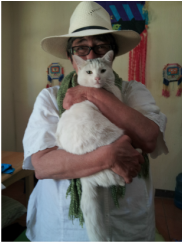Cemeteries, Ceremonies and Sacred Kites
Once I asked Julio how many hours of work he thought went into the kites. He laughed and said, “We could not count it in hours, it’easier to talk in months. His group, Happy Boys, begins work designing their kites for November in January. Below are photos from the group, Corazon Juvenil as they worked a Saturday night in September. The drawing at right is the original drawing for this part of the kite. It is then drawn by hand to the dimensions of the kite to give the outline for the placement of the pieces.
It is breathtaking to see the Happy Boys kite as they complete work on this enormous and wonderfully detailed kite which illustrates angels carrying the spirit of the dead to heaven. Watching them complete work on the detailed images from the 2nd floor is like watching the images themselves emerge from the kite. The view from the ground floor shows the size of this hall. The last row of pics shows the kite at the festival. A truly remarkable achievement. Happy Boys is known as the most innovative of the group and counts architects among their group members. It is also the only group to take on a name in English instead of in Spanish or Kachiquel.
While staying up all night every Saturday is one of the traditions of making the kites, the week of the festival, los barrileteros may go without sleep for the three nights proceeding the festival, in addition to their usual Saturday. Perhaps they are too tired to be nervous about the looming and absolute deadline when their kites must be DONE. One of the kites we visited looked to have quite a lot of cutting and gluing left, but the kitemakers demonstrated the same calm focus I observed when I visited them in September, applying themselves to the task at hand with care.
There is a special market of flowers, the traditional marigolds believed to guide spirits to their families through scent, white, yellow, purple chrysanthemums, fushia cockscomb all with the longs stems cut this morning from the gardens of the vendors. There are also wreaths resembling those used in funerals in the States. Here the round shape evokes the carona, the circle of the sun which is sacred to the Maya. Some say that the rounded shape of the traditional 8 sided Maya kite represents the corona, and the 8 points of the octagon represent the solstices, equinoxes and cross quarter days between them.
We bought bunches of long stemmed chrysanthemums and cockscomb from the vendors for Julio’s family to put at their gravesite. We wandered the indoor food market which was colorful and sparsely occupied by the late morning, sampling some of Guate’s exotic fruits – rambutan and zapote. I discovered a new treat, the best ever candy, carmelized fresh coconut. It is the same sauce of raw sugar, panela, which suffuses the more common sticky chunks of squash and sweet potato. But the texture and flavor of fresh coconut saturated in this carmalized sauce is ricisimo! I had another new Guate treat at our homestay– hot diced fresh pineapple in thin oatmeal served in a mug--delicious, nutricious and WARM.
We visited the cemetery that night to witness the Maya ceremony blessing Sumpango and the kites during this sacred holiday. The fire lit the canopy edged with flechas . Maya nanas, shamen, sat on their knees with their legs folded under them, woven cloth on their heads, stories embroidered onto their huipils. At various points throughout the ceremony we were all given candles to add to the fire which was rimmed with flowers.
In the cemetery people were cleaning the graves and decorting them with flowers Some of the graves are in cement monuments housing multiple generations of the Kachiquel Maya of Sumpango. Others are simple mounds covered in chac with marigolds. A few children flew their kites.
The morning was a great time for photos-- before the vast sea of visitors and the abundance of kites made taking pictures increasingly challenging. Although as the crowds grow so did the greatness of the kites and the heightened excitement of the festivites. The images towered above us, these fragile magnificent creative achievements.
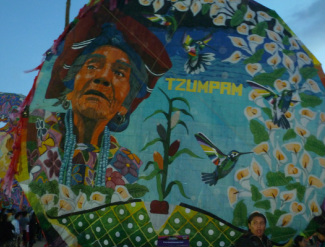
Of the diverse and magnificent array of kites, this was my favorite. Maybe it was seeing nana Delfina’s face lit by fire and being held in the trance of the opening ceremony. The life of this kite, the strong and true face, the beauty of nature surrounding her, the skill involved in creating this likeness from paper. . . I felt the presence of this kite all day, watching, hoping, leading. All of the giant kites incorporate the themes of birth, death and transformation, but each kite also speaks to a theme. This year the overwhelming theme was mother nature and the necessity of connecting with the earth It’s also interesting that for the three years I have attended the festival, the kites have featured many strong images of Maya women even thought the kitemakers are overwhelmingly young men.
In the afternoon the spectacular kites of 4 – 6 meters were flown to the cheers and moans of the crowd, Each kite gets three chances to fly. Their flying time is recorded. The spirit of the crowd rises when the kites take off, but for some it is only momentary, while others swerve in tantalizing and unfulfilled promise. The crowd moans when kites fall to the ground, abandoned by the wind; the wind is fickle and the kites are big.
Each tour is more than the amazing sites and the extraordinary adventures, it's about the companions on the journey who enliven my memories. Thanks to everyone who participated. Que te vaya bien.
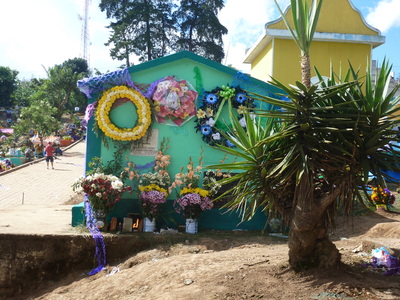
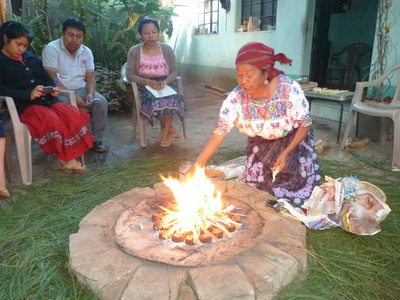
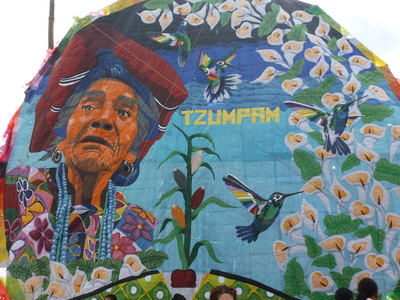
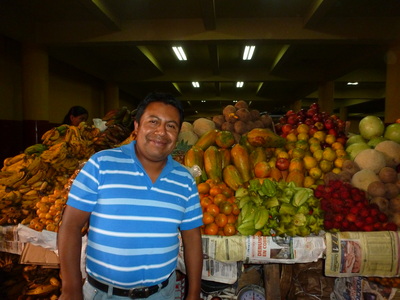
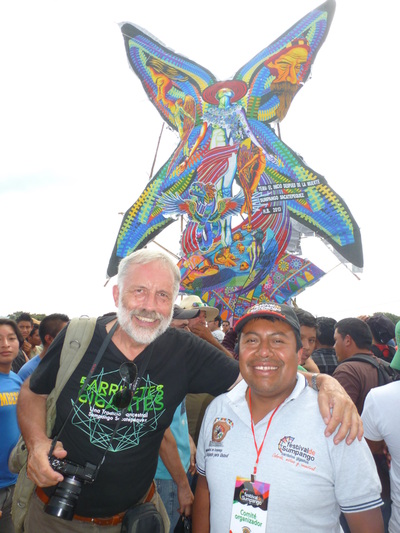
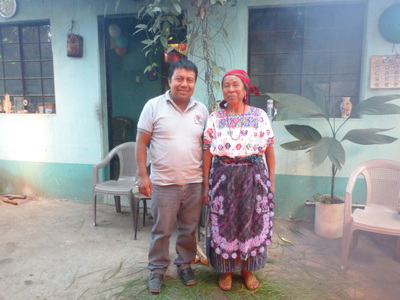
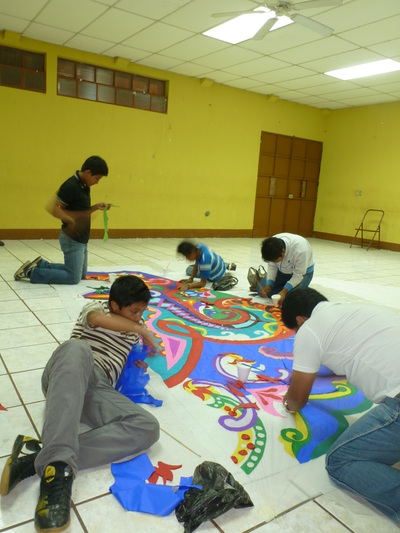
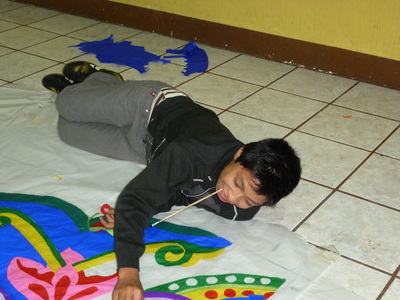
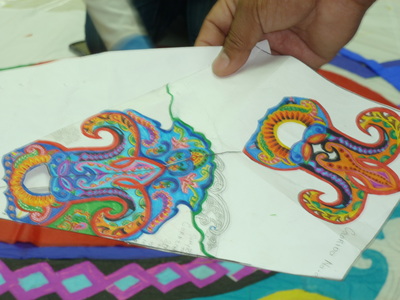
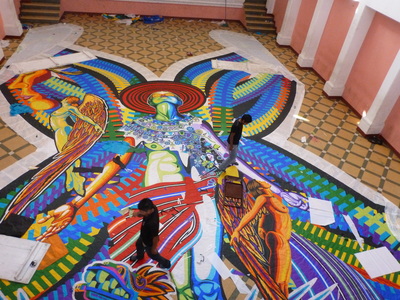
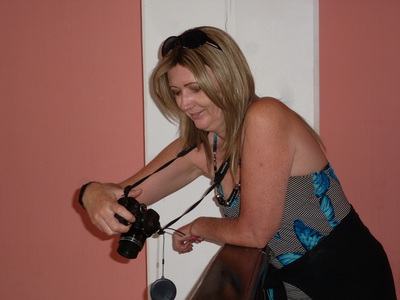
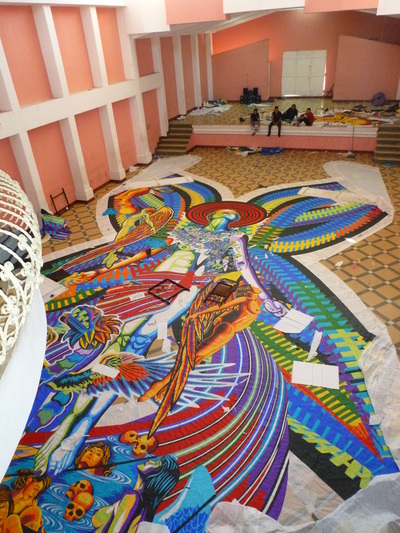
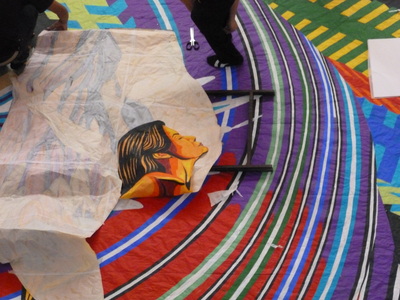
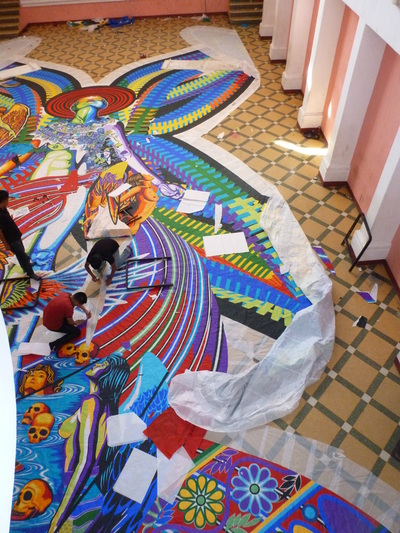
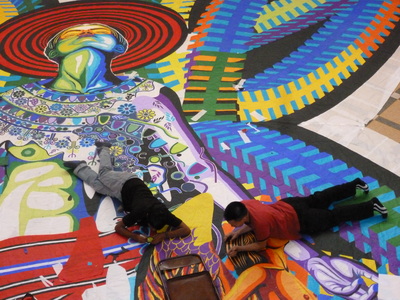
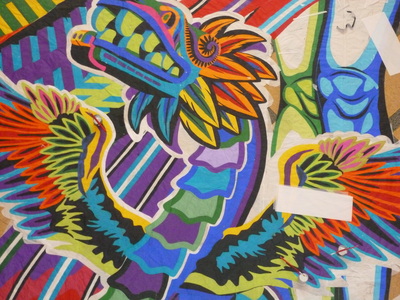
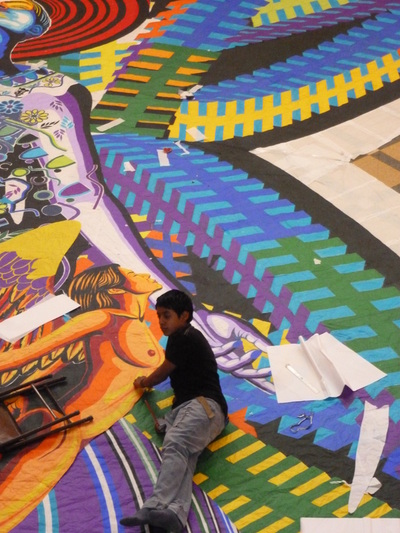
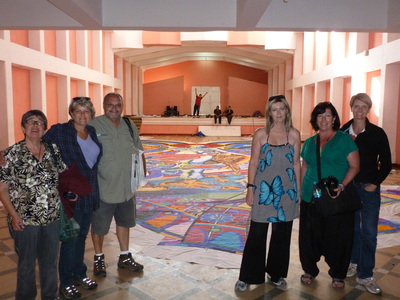
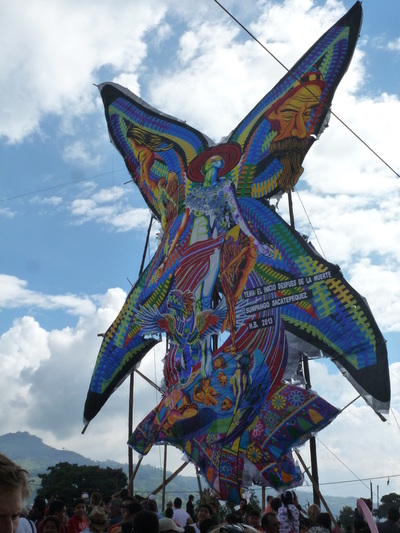

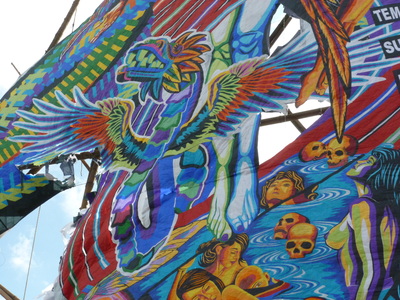
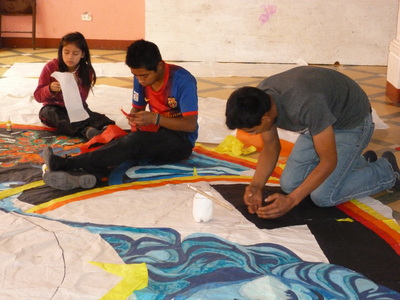
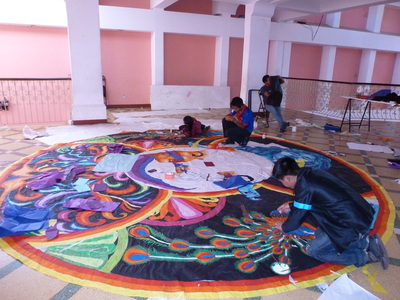
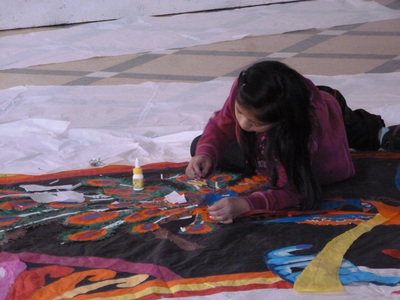
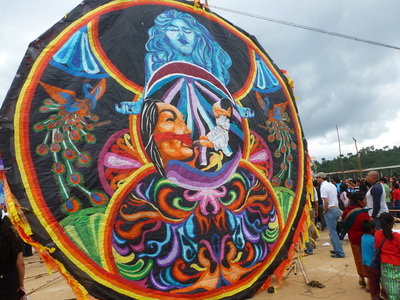
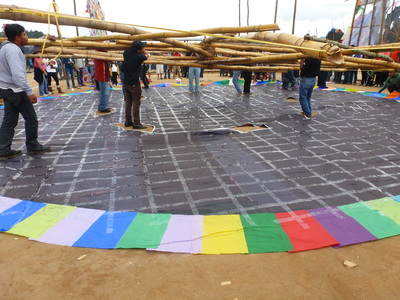
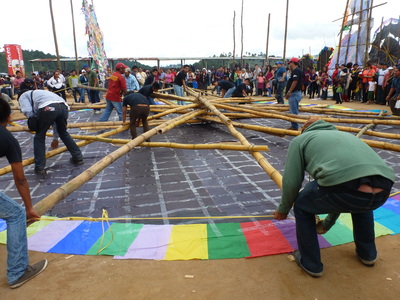
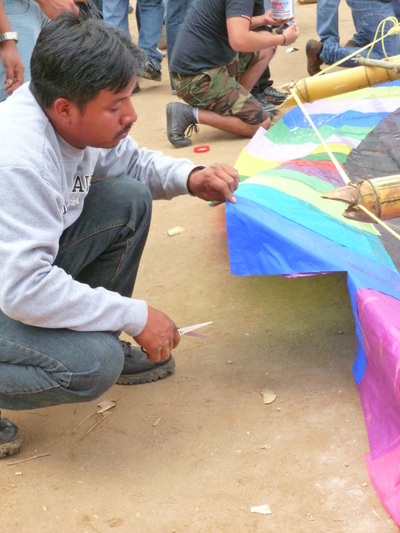
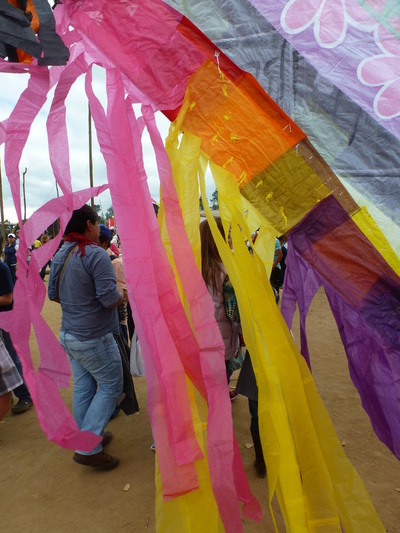
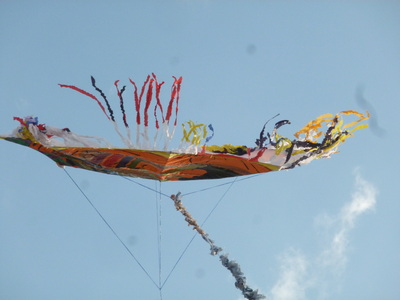
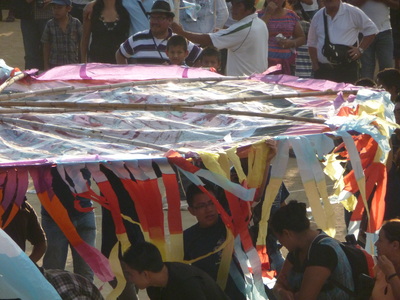
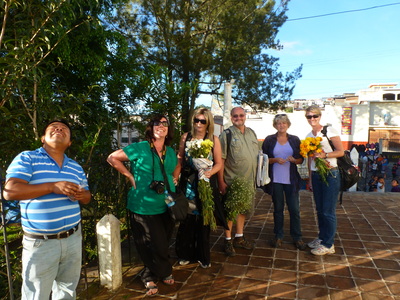
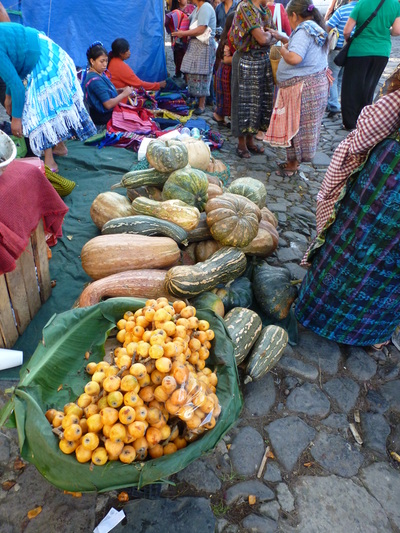
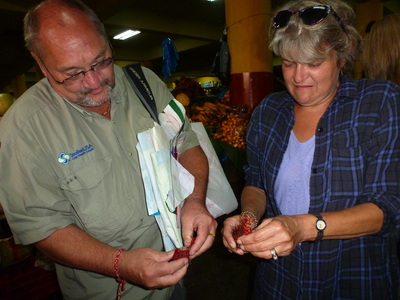
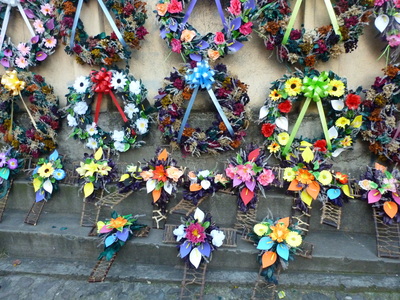
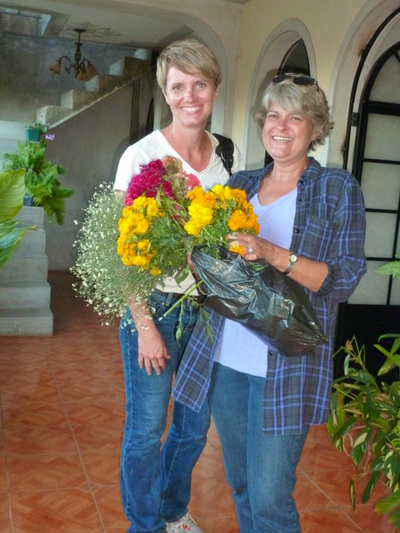
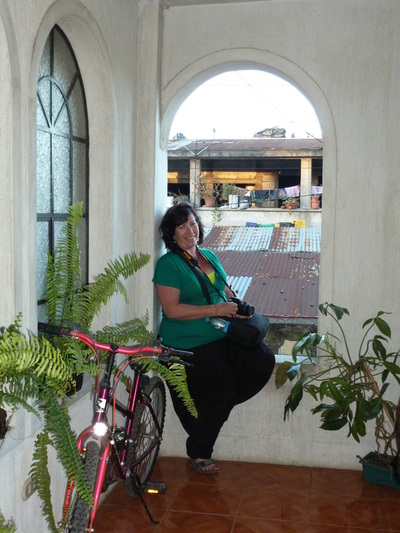
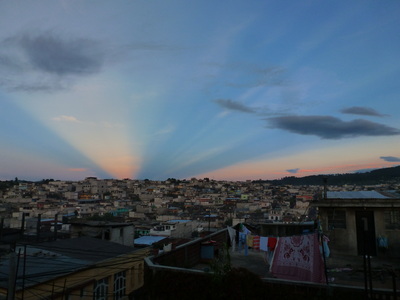
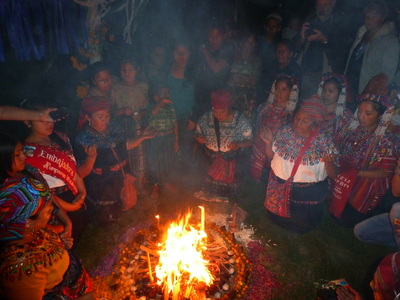
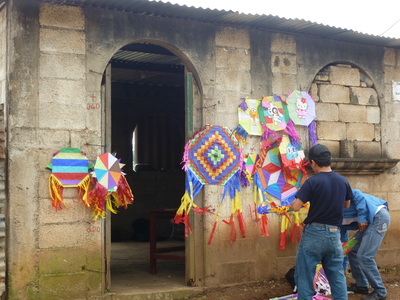
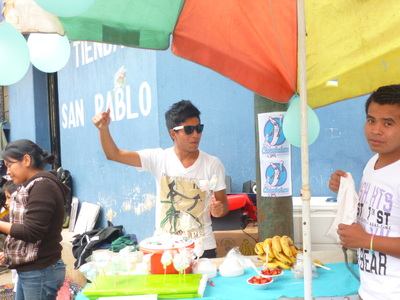
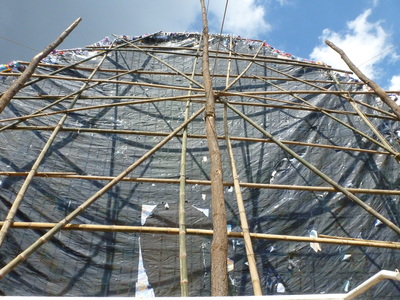
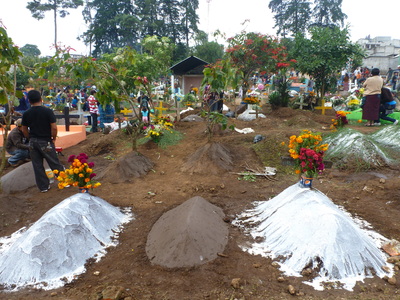
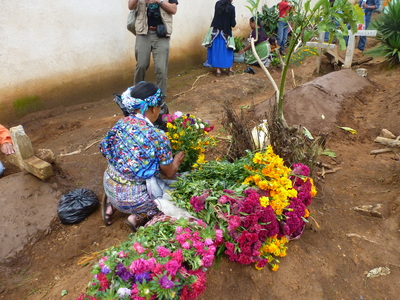
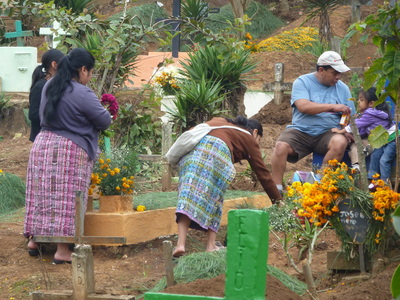
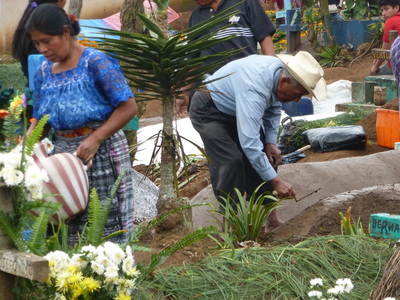
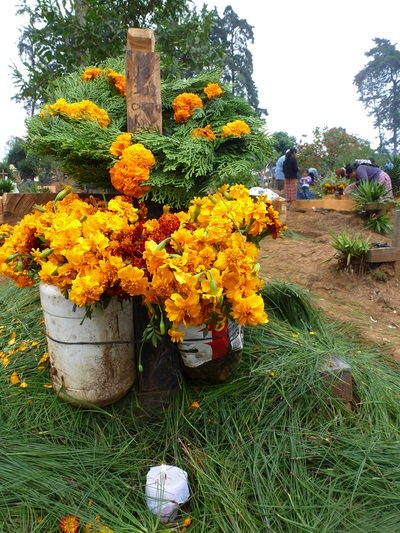
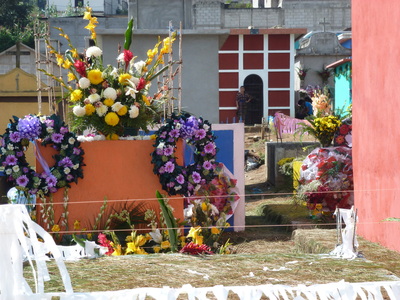
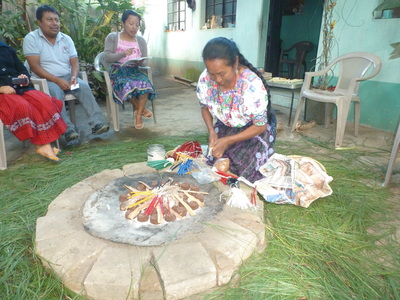
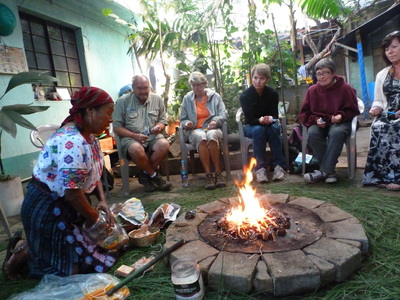
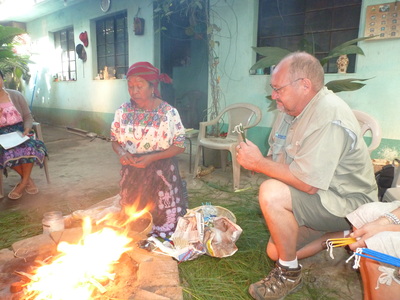
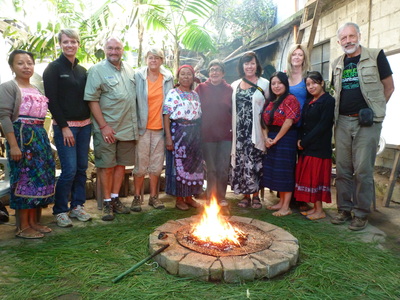
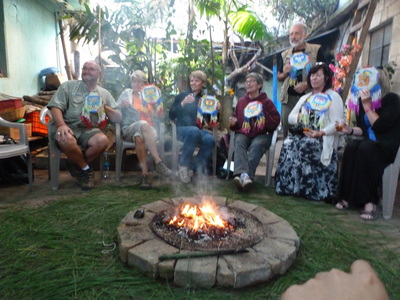
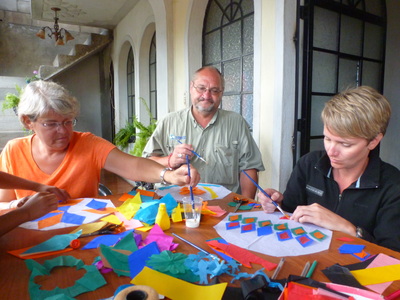
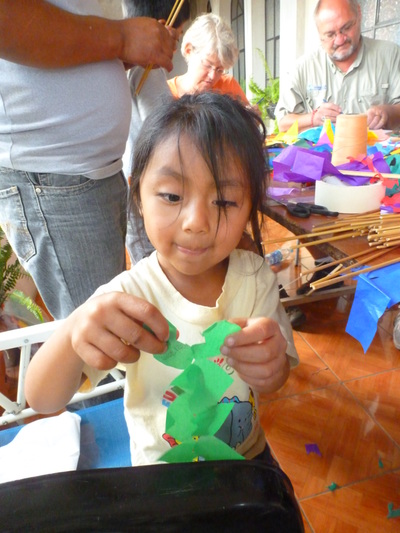
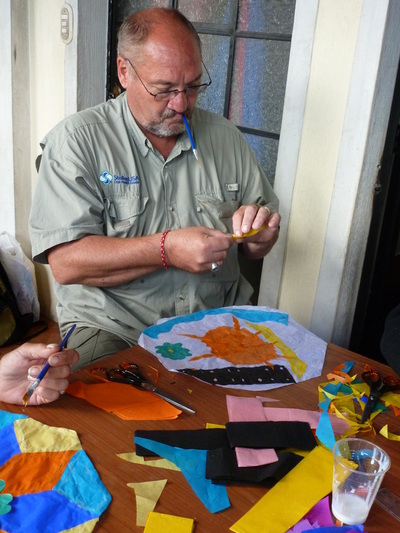
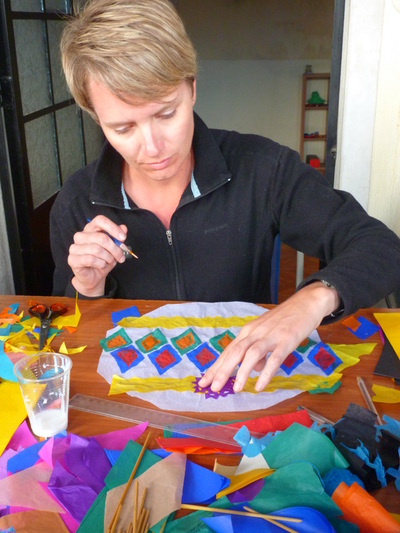
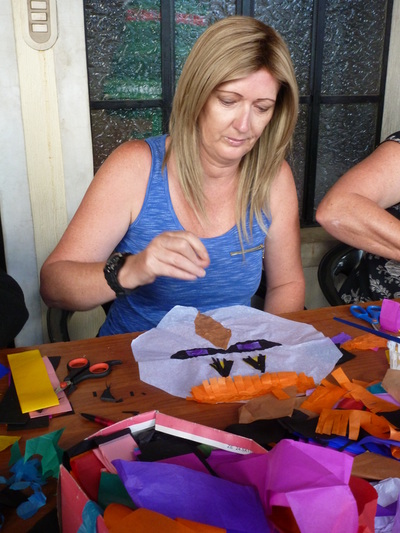
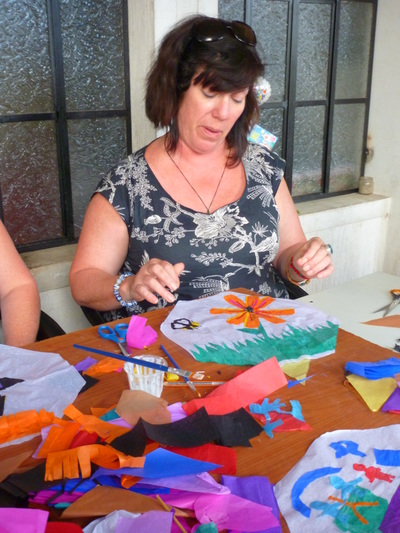
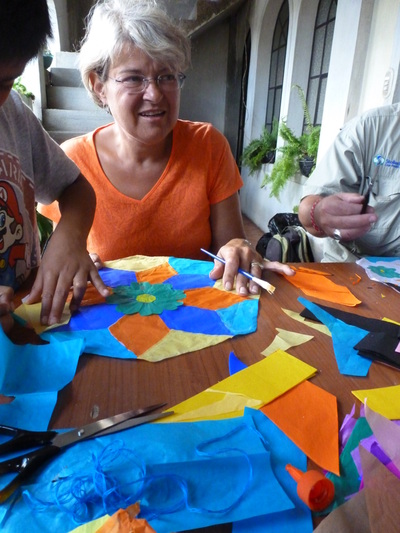
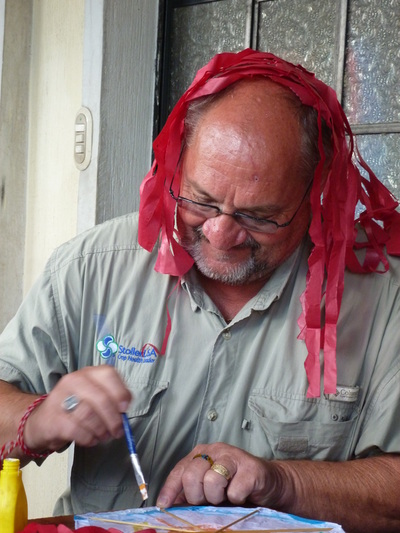
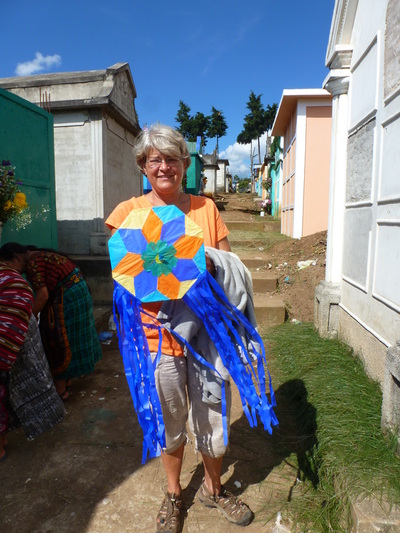
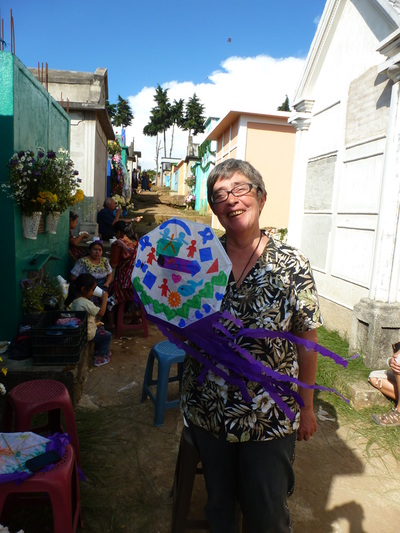
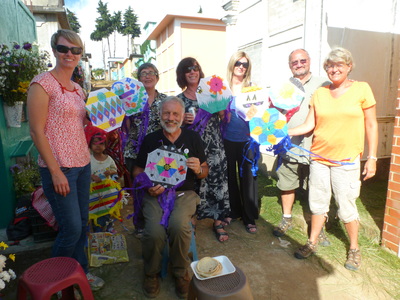
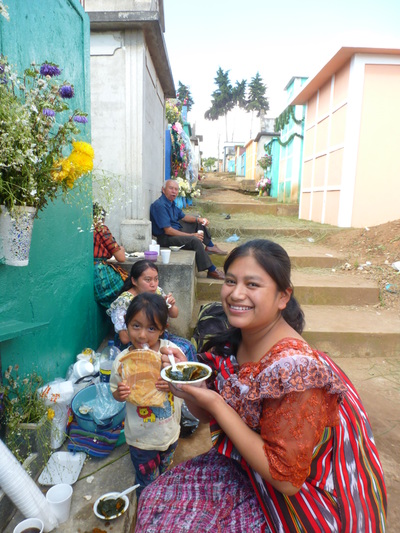
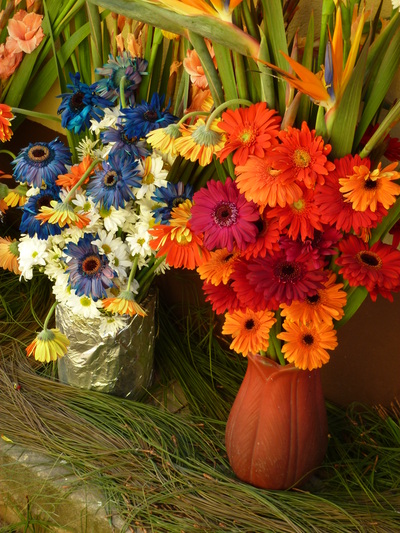
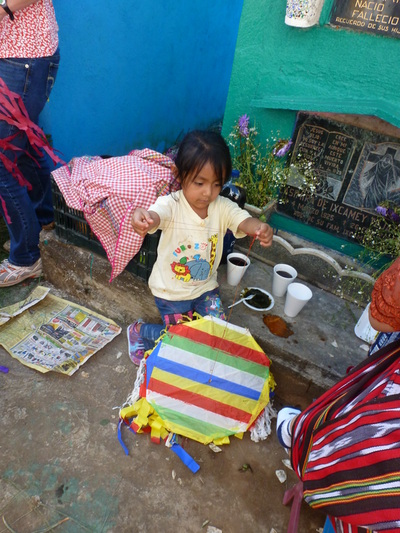
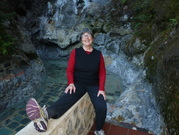
 RSS Feed
RSS Feed
